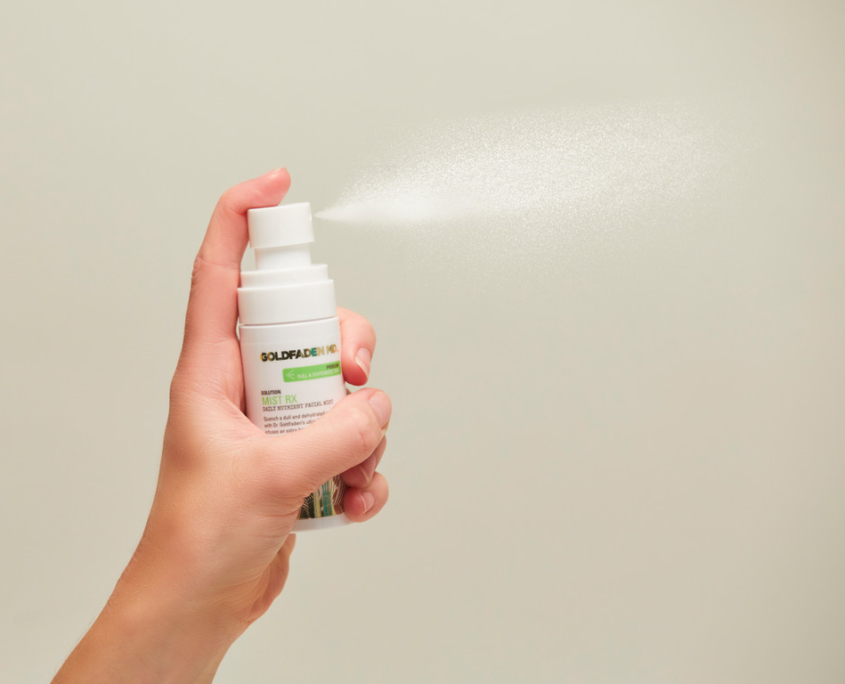By Kaitlyn McLintock
 Here’s a fun (read: frightening) activity. Sit back and add up the amount of time you spend working on your computer on any given day. Take that number and add the amount of time you spend on your phone. Add any remaining screen time, including but not limited to Netflix binges, online shopping, and time spent scrolling through news sites. The number you end up represents how long your skin is being exposed to potentially damaging light emitted from digital devices. This high energy visible light (HEV light), otherwise referred to as blue light, could be affecting the health of your skin in more ways than one.
Here’s a fun (read: frightening) activity. Sit back and add up the amount of time you spend working on your computer on any given day. Take that number and add the amount of time you spend on your phone. Add any remaining screen time, including but not limited to Netflix binges, online shopping, and time spent scrolling through news sites. The number you end up represents how long your skin is being exposed to potentially damaging light emitted from digital devices. This high energy visible light (HEV light), otherwise referred to as blue light, could be affecting the health of your skin in more ways than one.
Research tells us that blue light can cause skin damage. More specifically, it can cause hyperpigmentation and premature signs of aging. It causes the former by inducing inconsistent melanin production in the skin. It causes the latter by exposing your cells to oxidative stress, or free radicals, which damage the collagen in your skin, leading to such signs of aging as fine lines, wrinkles, and sagging skin.
That’s the bad news, but there’s good news, too. There are steps you can take to minimize the effect of blue light. From keeping an eye on your screen time to using antioxidant-rich skincare products, keep reading to learn more about how to care for your skin in the digital age.
Reduce Screen Time (If You Can)
The first and most obvious step in protecting your skin from an exorbitant amount of blue light exposure is to minimize your screen time. Even though that’s not always feasible when it comes to professional life (especially if, due to recent events, your laptop has become your office), there are ways to stay conscious of the time you’re spending on screens for other reasons. For example, limit time spent scrolling through social media to a few minutes each day. Track your screen time on your phone. Schedule screen-free time in your calendar, so you feel the freedom to walk away from your computer for a specific amount of time. At the very least, switch your phone display to night shift, which minimizes the amount of blue light it emanates.
Make Sure You’re Getting Enough Sleep
Because there’s evidence that blue light disrupts our natural circadian rhythm (aka our sleep-wake cycle), it’s important to prioritize sleep, especially if you’re spending most of your day staring at a screen. After all, research links sleep deprivation with acceleration in physical signs of aging such as fine lines and wrinkles. Sleep deprivation could also harm our skin’s natural reparative processes, meaning damage and inflammation could ensue from not getting enough shut-eye.
Load Up on Antioxidant Protection
We’ve already discussed how blue light exposes your skin to oxidative stress, or free radicals, which can damage collagen and lead to physical signs of aging.  Antioxidants prevent free radicals from damaging the skin, which is the reason antioxidant-rich ingredients are so prevalent in blue light skincare products.
Antioxidants prevent free radicals from damaging the skin, which is the reason antioxidant-rich ingredients are so prevalent in blue light skincare products.
The efficacy of antioxidant-rich skincare is exactly why Dr. Goldfaden formulated the Mist Rx Daily Nutrient Face Mist with aloe vera, kale sprout water, Kakadu plum, and plant & fruit stem cells—all of which have antioxidant properties to fight free radical damage, thus mitigating the harmful effects of blue light on our skin.
While these blue-light-blocking tactics are all worth practicing, it’s important to note that our main source of blue light exposure is from the sun (and no, sunscreen won’t necessarily protect your skin. Remember that sunscreen protects against UVA and UVB rays, not HEV…). This is something to keep in mind, lest we panic and blame our ceaseless Zoom meetings for damaging our skin beyond repair. It’s likely that our skin is happy and healthy if we remain conscious of our health and lifestyle habits, focus on getting good, quality sleep, nourish our skin with the right protective skincare products, and schedule regular check-ins with a dermatologist.
ABOUT THE WRITER:
Kaitlyn McLintock is a beauty and wellness writer based in Los Angeles. Her work has appeared in such publications as Popsugar, Byrdie, Hello Giggles, Who What Wear, and more. When she’s not writing, researching, and editing, or testing out the latest skincare and makeup products, she’s drinking coffee and spritzing Goldfaden’s Mist RX all over her skin.


